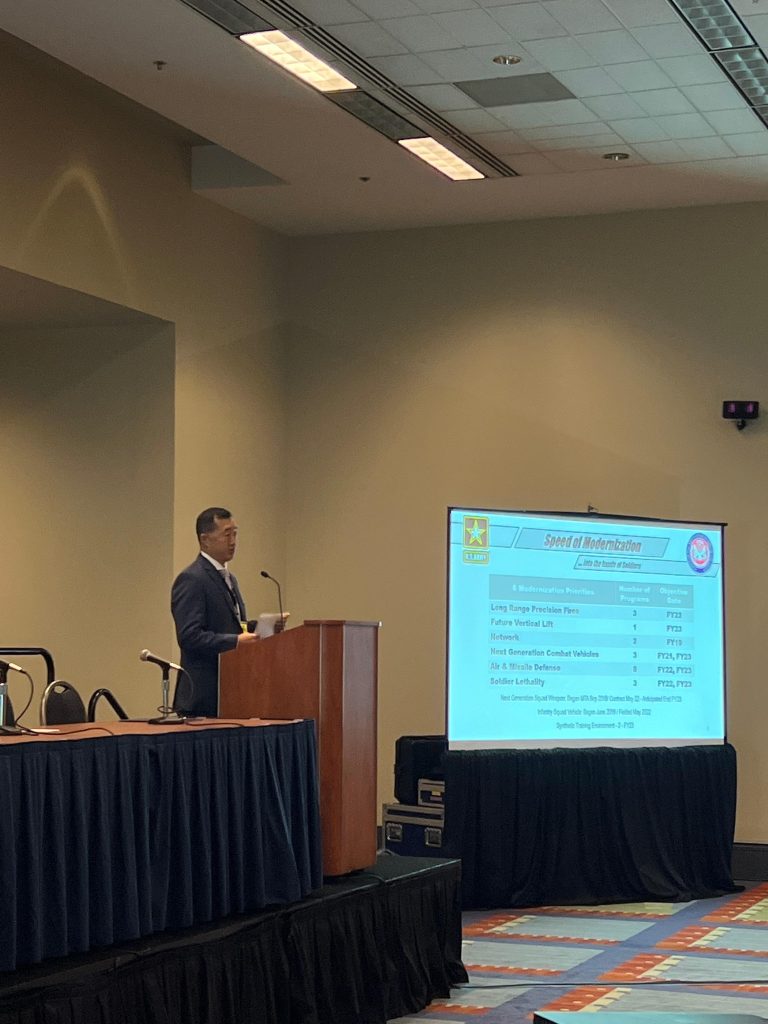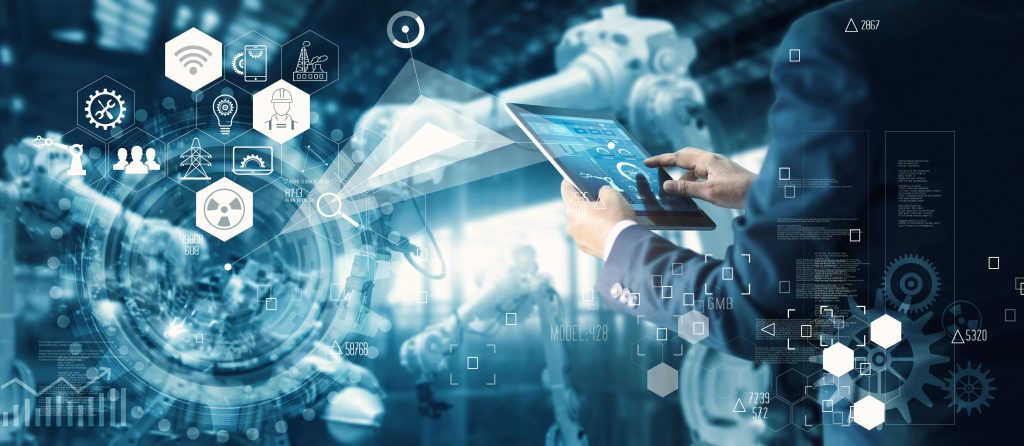
A NEW CHAPTER FOR SOFTWARE DEVELOPMENT: The story of Army modernization in 2023 is a story of software development, interoperability and continuously iterated and integrated software products. (Photo by Getty Images)
FROM THE DIRECTOR OF
ARMY CAREER MANAGEMENT
RONALD R. RICHARDSON JR.
The transformed workforce will be digital-forward, understanding of the role, uses and manipulation of data seamlessly across the multidomain battlespace.
For the U.S. Army, 2023 is the year of digital transformation.
That’s the message that Young Bang, the principal deputy to the assistant secretary of the Army for acquisition, logistics and technology, conveyed at the forum “Digital Transformation: Supporting Army Modernization” during the Association of the United States Army Annual Meeting and Convention in October.
And this transformation will have a big impact on how the Army Acquisition Workforce does business. A digitally transformed Army cannot happen without a digitally transformed Army Acquisition Workforce. “To enable faster delivery of capabilities to our warfighter, we must drive towards open systems that are interoperable [and] interchangeable and plug and play,” Bang said.
To support digital transformation, we must reskill and upskill our workforce. Companies in banking, the automotive sector and nearly every other industry have become technology companies—in effect, software companies. They are digitally transforming, as the Army must. Much of our workforce is involved in software-intensive programs. For those professionals who aren’t, you almost certainly have software embedded in your products. The story of Army modernization in 2023 is a story of software development, interoperability and continuously iterated and integrated software products. Software is pervasive across all aspects of Army acquisition, and there are many layers and levels to that software. That will only increase.

DIGITAL TRANSFORMATION DISCUSSION: Young Bang, principal deputy to the assistant secretary of the Army for acquisition, logistics and technology, conveyed that 2023 is the year of digital transformation for the U.S. Army, at the “Digital Transformation: Supporting Army Modernization” forum during the Association of the United States Army Annual Meeting and Convention in October. (Photo courtesy of ASAALT)
A DIGITAL-FORWARD WORKFORCE
My priority for the next year is accelerating the digital transformation of the workforce. The transformed workforce will be digital-forward, understanding of the role, uses and manipulation of data seamlessly across the multidomain battlespace. Having a fundamental baseline understanding of how software functions within modular, open-systems architectures, in the systems-of-systems that will integrate Soldiers and materiel, and how those interoperate will promote the digital transformation so critical to our Soldiers against pacing threats.
“Our software development process and approaches must be modernized to enable smaller, faster, incremental delivery of capabilities and drive towards” continuous integration and continuous deployment, Bang said.
Making available the training to do that will be central to enabling our Army Acquisition Workforce to support this mission. The Defense Acquisition University is working on building out knowledge areas and credentials in software development, DevSecOps (development + security + operations), artificial intelligence (AI) and cyber security that will be available at the foundational level.
My office is also expanding or tailoring some of our training and development programs to allow for more targeted focus in science, technology, engineering and math (STEM). For example, our Leadership Excellence and Acquisition Development (LEAD) program now includes an infusion of unique digital technology experiential and training opportunities, (i.e., IT, cyber, AI and human systems integration). “The Army is going to scale the heck out of AI,” Bang said.
We are also partnering with academic institutions and industry, many of which are currently leading the way in the digital transformation space, in an effort to learn from and leverage their best practices. We recently launched a new digital transformation training course at Carnegie Mellon University’s Heinz College of Information Systems and Public Policy in Pittsburgh.
We are also sponsoring a two-week long digital data user’s skill-development course for our mid-grade professionals so they better understand how to identify which data methods and tools can be used to solve problems. These training opportunities were made possible because Section 8080 of the “Consolidated Appropriations Act, 2022” allocated $50 million to be available through the Defense Acquisition Workforce Development Account for “recruiting and training the Department of Defense artificial intelligence-literate acquisition workforce.”

ARMY + VALUES = CAREER OPPORTUNITIES: Army values coincide with the Army’s career opportunities in science, technology, engineering, and mathematics. (Photo by Robert L. Fisher III, U.S. Army Recruiting Command)
Graphics were digitally drawn over a stock image of a chalkboard.
TRAIN EARLY, OFTEN
Acquisition professionals do not need to wait for these training opportunities to become available to begin expanding your knowledge of software innovation, data and AI. Each Army acquisition functional leader has published continuous learning point (CLP) guidance, much of which includes digital transformation-related training opportunities. I encourage workforce professionals to review these standards, work with your supervisor and update your individual development plan in the Career Acquisition Management Portal/Career Acquisition Personnel and Position Management Information System (CAMP/CAPPMIS) to account for these training goals.
The DACM Office also provides tuition assistance for individual courses or towards STEM-related degrees if you prefer to go that route. Our Acquisition Tuition Assistance Program provides tuition, laboratory and technology fees, within limits, to AAW civilians, military occupational specialty 51 contracting (51C) noncommissioned officers, and flexible length and renewable-term technical-appointment employees in DOD laboratories designated as Science and Technology Reinvention Laboratories (STRLs). The STRL program is “a new workforce shaping pilot program that provides the STRL lab directors the authority to dynamically shape the mix of technical skills and expertise,” according to DOD.

TRANSFORMING IN 2023: Digital transformation will have a big impact on how the Army Acquisition Workforce does business. A digitally transformed Army cannot happen without a digitally transformed Army Acquisition Workforce. (Photo by Getty Images)
The Naval Postgraduate School (NPS) has a renewed focus on STEM in three tracks—engineering, program management and contracting. For officers, Advanced Civil Schooling provides an opportunity to pursue advanced degrees in STEM, whether it’s through attending the NPS or a school of choice. That deep knowledge will be critical to the workforce. “We often constrain technology because we don’t understand it or are un-imaginative on how to employ it,” Bang said.
All of these efforts will enable a new vision for our workforce to modernize in line with industry and in advance of our adversaries. This will look like quickly gathering and conveying data to leaders to enable their decision making, better consumption of data between systems and a flattened and simplified architecture. Our use of a continuous learning model, and a well-educated and well-trained workforce is what will get us through 2023—the year of digital transformation for the Army.







